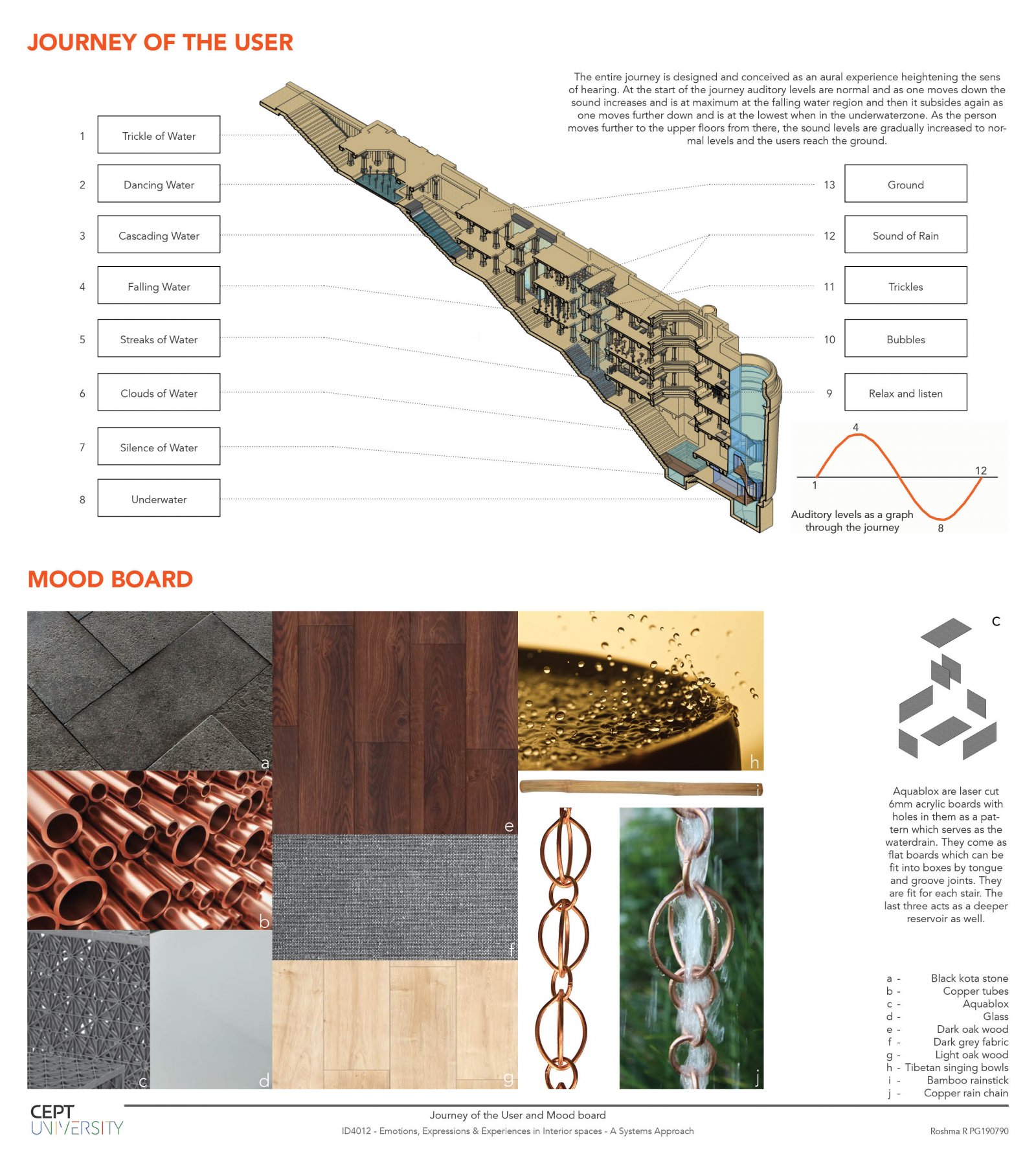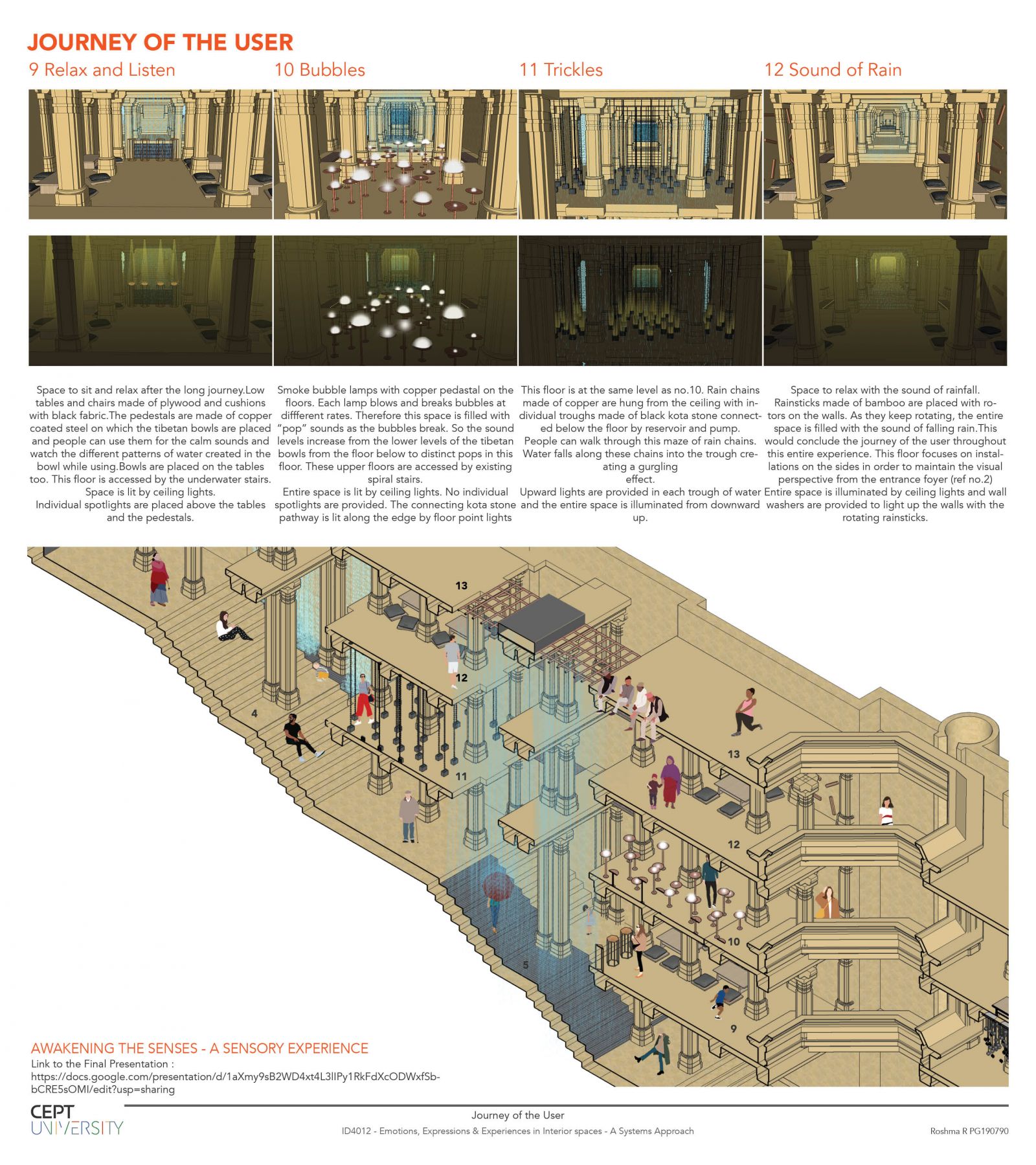- Student ROSHMA R
- Code PG190790
- Faculty Design
- Unit L4 Studio Unit
- Tutor/s Shailesh Manke,Moksh Thapar
- TA Vibhuti Shah
Architecture has been dominated with the ocular scape, experienced through the eye. It has a lot more to see, but without deeper sensory engagement, there is much less to feel ( both physically and emotionally). The world is not a flat screen; we are designed for a richer existence. Our minds and bodies are designed for layered multisensory experiences - and yet most buildings address exclusively through the visual channel. This sensory imbalance contributes to emotional imbalance as we feel more distracted, depressed and overwhelmed. One can begin to heal this disparity by embracing a more intentional and holistic approach to designing for the senses. All media is designed for humans by humans. Everything we interact with, from the signs we read, to the cups we hold, to the roads we navigate, are designed by people that have specific ideas about the way that interface should exist in the world. Designers, innovators, artists have begun to create media, in the broadest sense, with a new focus on the user. Instead of seeing users as merely a rational thinking brain, this trend acknowledges to user as an embodied, emotional, sensing, relational creature that is affected and can affect the world. This project aims to investigate the expression of this movement in spatial experience, using water. Space is inherently embodied - to be in space one must physically, three dimensionally, encounter it. But what would happen if the sensory, affective, embodied human was at the centre of spatial design? What would space be if creating an experience was at the centre? What is the role of the senses in creating these spatial experiences? How do you materially create sensory, affective and embodied space?









